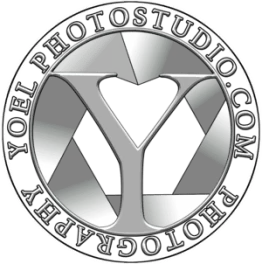As a passionate storyteller and avid communicator, I’ve always viewed photography as more than just snapping pictures; it’s a profound form of self-expression that resonates on a universal level. Understanding how to choose a camera that aligns with your vision is not only essential—it’s transformative. Whether you’re a budding photographer or simply charting a new creative path, the decision should reflect both your photography goals and your zest for capturing life’s fleeting moments.
Recognizing the importance of this journey, I’m thrilled to share a comprehensive camera selection guide. It’s crafted to illuminate the path for beginners and is interspersed with insightful camera features comparison to carve out the photographic odyssey that awaits you. With this guide, navigating the extensive camera landscape becomes less intimidating, empowering you to make informed choices based on an in-depth understanding of the nuances of today’s photography gear.
Key Takeaways
- Identify your photography goals to choose a camera that best serves your creative needs.
- Explore a range of features and perform a thorough camera feature comparison before making a choice.
- A comprehensive camera selection guide can substantially simplify the decision-making process.
- Choosing the right camera involves understanding current technology trends and how they influence photography.
- Learning about the balance between camera functionality and budget is an essential step for beginners.
Embarking on Your Photographic Journey
The call to capture life’s moments through the lens of a camera is a thrilling venture that has drawn countless individuals to the art of photography. My quest begins by walking through the paths carved by the greats, guiding me on how to choose a camera that is not just a gadget but a storyteller in its own right. The blend of skill, creativity, and the right gear can turn simple snapshots into powerful narratives. As I reflect on this, my journey is met with the challenge of making a wise selection in a sea of choices.
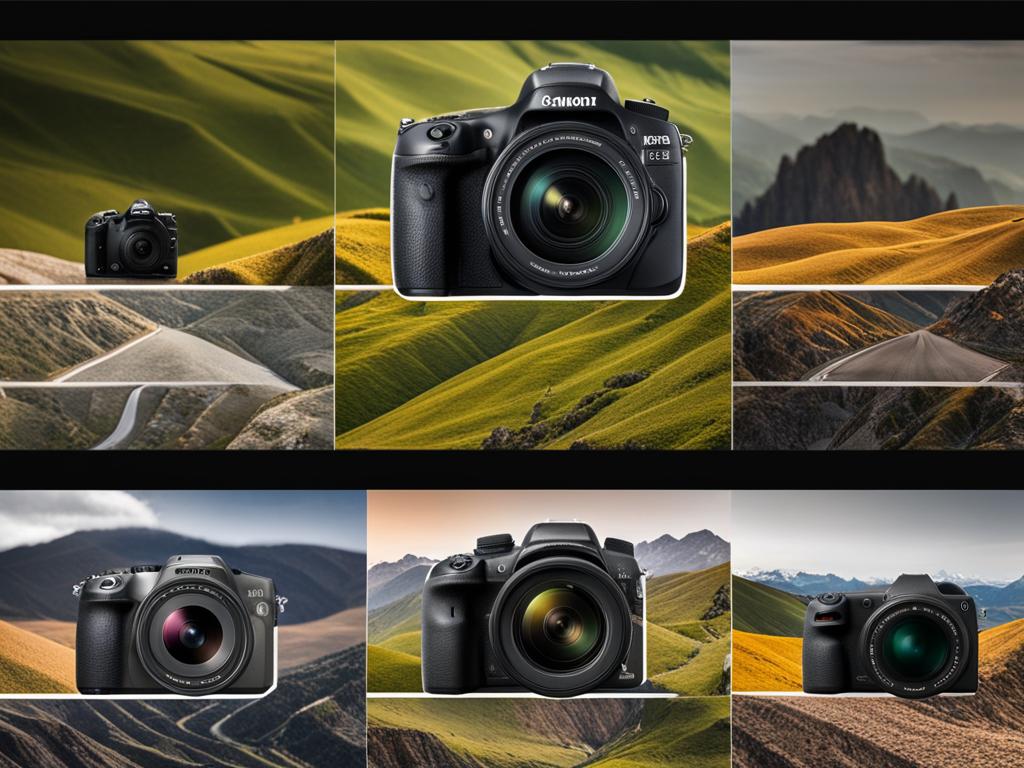
The Power of Photography in Storytelling
Whenever I hold a camera, I am reminded that I’m holding a powerful tool that can freeze time, depict raw emotion, and narrate untold stories. Photography enables me to communicate and engage with audiences without the barrier of language. It’s about finding the extraordinary in the ordinary, and with each frame, I strive to let the visuals convey tales that words sometimes cannot.
Navigating the Ocean of Camera Choices
Understanding camera selection tips is crucial as I set sail in the vast ocean of camera options. From sleek mirrorless models that speak of modernity and convenience to the classic DSLR cameras revered for their precision, the decision rests upon balancing my needs with innovation. The camera buying guide is not just a manual; it’s a compass that points to the intersection where my photography goals meet technology.
Below, I’ve charted a course through the key considerations that shape the journey of selecting the perfect camera:
| Consideration | Reason for Importance | My Reflection |
|---|---|---|
| Sensor Size | Contributes to image quality and low-light performance | I value vibrant and clear images, especially in dimly lit environments. |
| Lens Availability | Defines the versatility and range of photography | My interest leans towards experimenting with various focal lengths. |
| Autofocus System | Speed and accuracy for capturing moments | As action and storytelling are central to my work, a reliable autofocus is essential. |
| Video Capability | Allows for multimedia storytelling | I am drawn to the power of motion picture, hence, high-definition video is a must. |
| Ergonomics & Design | Comfort and ease of use during extended shoots | A camera that feels like an extension of my hand is vital for my creative process. |
In my journey, I acknowledge that while the technical prowess of a camera matters, it is ultimately the photographer’s vision that turns the ordinary into the sublime. No matter the journey’s twists and turns, the goal remains steadfast: to capture the world as only I can see it, through the viewfinder of my chosen companion.
Understanding Camera Types and Technology Shifts
As someone deeply interested in photography, I’ve observed a significant shift in the types of cameras used by both beginners and professionals. Just a decade ago, compact point-and-shoot cameras were a staple for beginners due to their affordability and ease of use. Yet, camera technology advancements have changed the game, steering the market towards more sophisticated apparatuses such as DSLR cameras and mirrorless cameras.
Let’s dive into the intricacies of these two primary camera types which are foundational to modern photography. DSLR cameras have long held the throne, boasting a tried-and-true system with interchangeable lenses, robust manual controls, and high-quality image sensors. They’ve been the go-to for ultimate image control and for learning the nitty-gritty of camera specifications. Alternatively, mirrorless cameras are lightweights in comparison, but they pack a punch with avant-garde features like fast autofocus and a compact size.
For those who might find themselves bewildered by the differing features, I gravitate towards creating comparisons to clarify the choices available:
| Feature | DSLR Cameras | Mirrorless Cameras |
|---|---|---|
| Sensor Size | Typically larger | Ranges from small to full-frame |
| Autofocus | Traditional optical viewfinder system | Advanced fast autofocus capabilities |
| Weight and Size | Heavier and bulkier | Lightweight and compact |
| Interchangeable Lenses | Wide selection | Slightly limited but growing rapidly |
| Battery Life | Longer due to less power consumption | Shorter, often due to high-resolution electronic viewfinders |
| Price | Globally affordable | Can be costlier, especially newer models |
Whether you lean towards the rich heritage and tactile feedback of DSLR cameras or embrace the speed and compact nature of mirrorless cameras, understanding how camera technology has evolved is integral. Provided with this knowledge, photographers can make informed choices that align with the dynamic landscape of photography today.
Curiosity and a hunger for innovation continue to drive the industry forward, making this an exciting era for camera technology advancements. As I remain vigilant on the latest trends, my mission remains to demystify these technological transformations and help photographers select a camera that serves their aspirations faithfully.
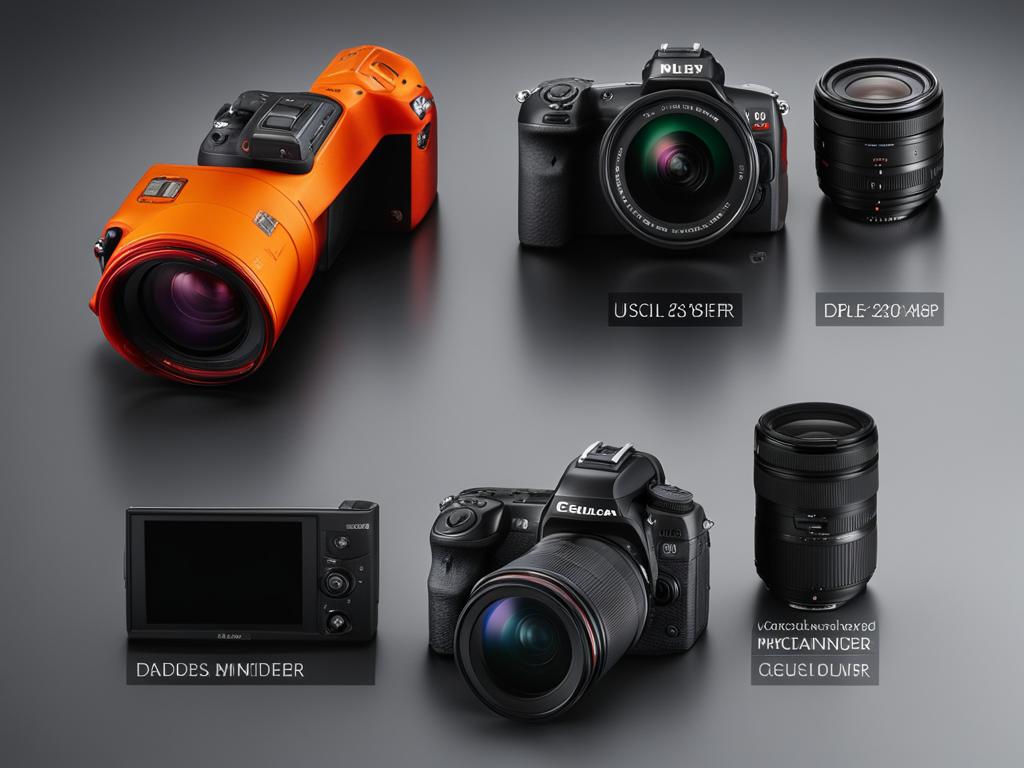
How to Choose a Camera: Deciphering Camera Specifications
As I delve into the intricate world of photography, the realization that not all cameras are created equal becomes crystal clear. In this segment, we scrutinize the core specifications that will dramatically affect your photography experience. From the vastness of sensor sizes to the expansiveness of megapixel counts, let’s illuminate the essentials that should guide every camera purchase decision.
Assessing Sensor Sizes for Optimal Image Quality
One of the most crucial elements in a camera is its sensor size. While common belief might suggest megapixels hold the throne for image quality, it’s the sensor that truly reigns supreme. Sensor size directly influences the amount of light captured, which is fundamental to crafting those vivid, detailed images, especially under diminished lighting. Let’s take a closer look at the different sensor sizes and how they contribute to superior photographic outcomes.
When the sun dips below the horizon, and the light becomes scarce, a larger sensor becomes the beacon in the dark, enabling the camera to sequester every possible photon for a remarkable shot.
I’ve found that, for beginners, understanding the nuances between full-frame sensors and those like APS-C or Micro Four Thirds, which are smaller but still highly effective, is absolutely vital. Full-frame sensors offer the broadest dynamic range, while smaller variants like APS-C provide a balance between size, performance, and cost.
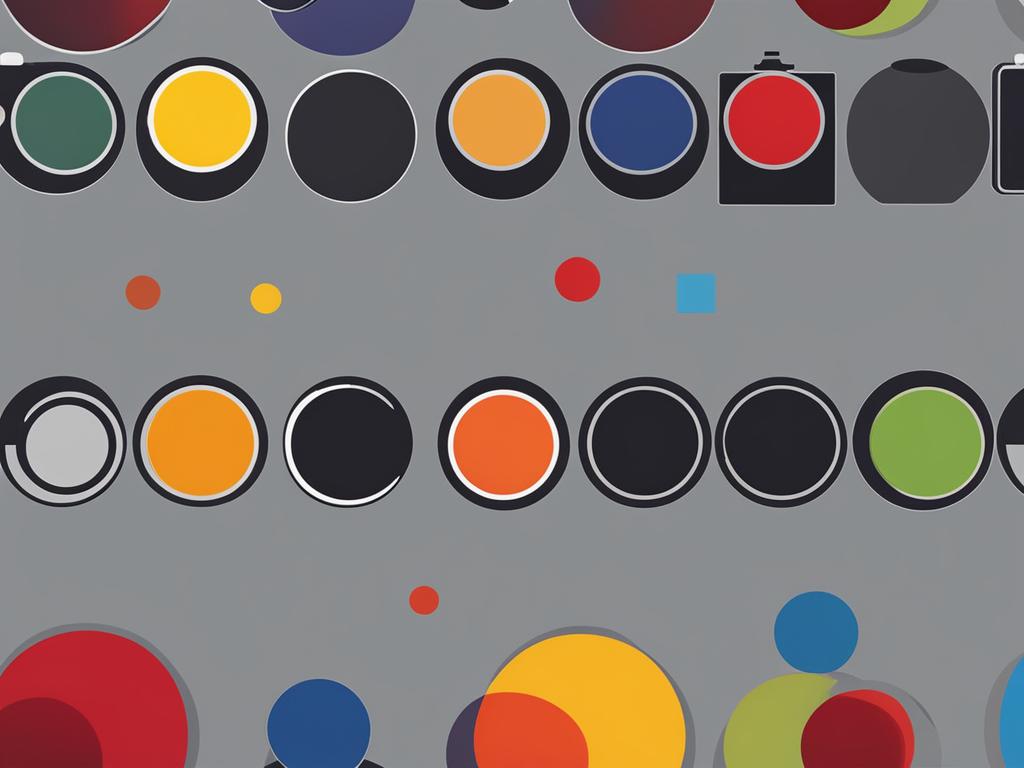
Interpreting Megapixels: What Really Matters
Now, let’s address the megapixel mystery. It’s common to equate higher megapixels with better image quality, but I’ve learned this is a misconception. While a higher megapixel count does afford detail retention, allowing for rich cropping and large-format prints, sensor size and lens quality are the true maestros of image quality.
The current technology equips even entry-level cameras with ample megapixels, often surpassing what the average user requires. Instead of chasing after the highest megapixel count, aim for a balanced ecosystem of camera specifications.
| Sensor Type | Common Resolution | Light Sensitivity | Best Used For |
|---|---|---|---|
| Full-Frame | 20-30+ Megapixels | High | Professional photography, Low-light settings |
| APS-C | 16-24 Megapixels | Medium | Everyday use, Travel photography |
| Micro Four Thirds | 10-20 Megapixels | Lower | Compact system camera enthusiasts |
Deciphering camera specifications such as sensor size and megapixels can be daunting at first. Yet, understanding these key factors is the cornerstone of selecting a camera that ensures each captured moment is not just an image but a story told with clarity, color, and connection. As we push the boundaries of what cameras can achieve, always remember, it’s not just the camera’s specifications, but also how you use them that will carve your path in photography.
Investigating Key Features for Photography Excellence
When I set out to choose a camera, I ensure that it has the advanced features to match my photography ambitions. High-quality lens options, robust image stabilization to combat blur, a swift autofocus system for capturing fleeting moments, and top-notch video capabilities for multimedia projects top my list of requirements.
Lens Compatibility and Flexibility for Your Art
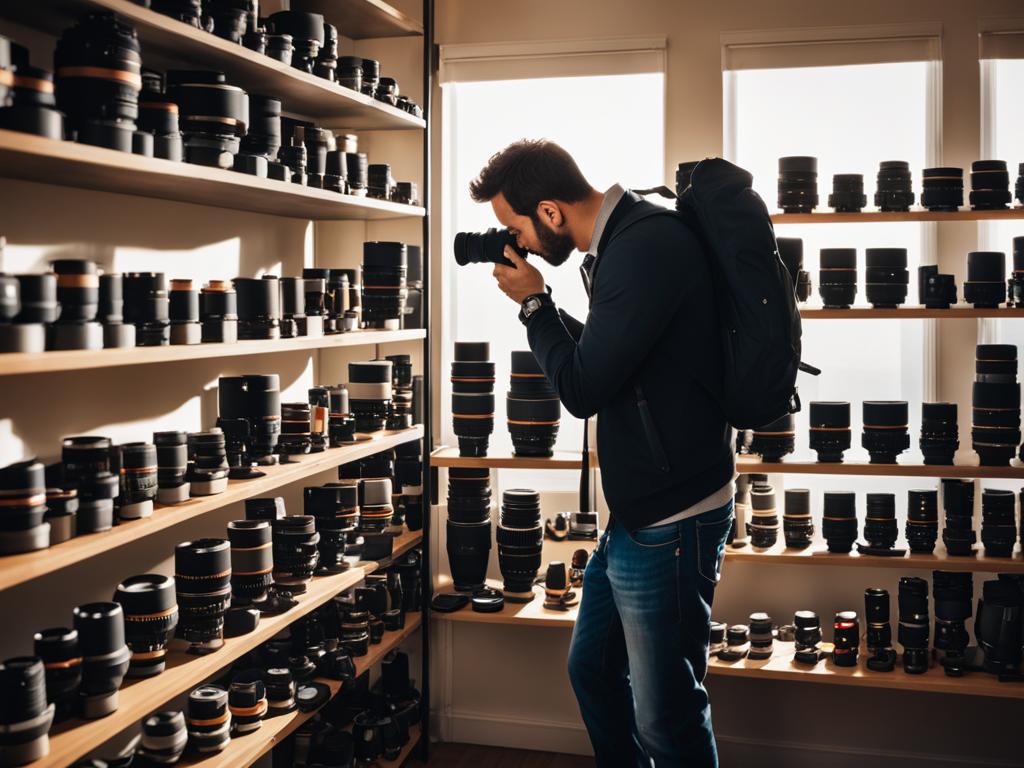
Flexibility in lens choice paves the way for diverse artistic expressions. Whether I need the broad vistas captured by a wide-angle lens, the detail-oriented shots that a macro lens affords, the reach of a telephoto lens, or the crisp precision of a prime lens, the lens options available influence how I portray the world through my photos:
- Wide-angle lenses – for sweeping landscapes and architectural marvels.
- Telephoto lenses – to bring distant subjects into sharp relief.
- Macro lenses – for detailed, up-close photography.
- Prime lenses – with a fixed focal length for superior image quality.
The Critical Role of Autofocus in Capturing the Moment
The moment a bird takes flight, the laugh lines of a loved one, the climactic finish of a race—sharp images of such fleeting instances are made possible by sophisticated autofocus systems. I have a particular fondness for cameras that incorporate artificial intelligence to predict subject movement, ensuring that I don’t miss the moment:
| Feature | Importance | My Experience |
|---|---|---|
| Image Stabilization | Essential for sharp images in unpredictable circumstances. | It has transformed my handheld photography, particularly in challenging light. |
| Autofocus Speed | Crucial for action or wildlife photography. | The swift response has been a game-changer in capturing high-speed action. |
| Autofocus Points | More points offer better coverage and precision. | Having a multitude of points has enabled me to lock focus on erratic subjects seamlessly. |
| Video Resolution | High definition enhances video quality and detail. | 4K recording has given my videography a professional edge and exceptional clarity. |
Camera Features Comparison: Beyond the Basics
As I delve deeper into my journey of camera selection, one truth remains—camera price range can have a significant influence on the choice. However, my philosophy revolves around striking that delicate balance between cost-effectiveness and functional prowess. To this end, consulting comprehensive camera reviews has become an invaluable step in navigating the extensive market. These critiques often shed light on how well different models have performed in real-world scenarios, helping me to gauge which cameras offer the best value for their price.
Ergonomic design and intuitive controls also stand out as pivotal aspects in my quest for the perfect camera. It’s not enough for a camera to have high-end specs; it must also feel right in my hands. Comfort, button layout, and menu accessibility contribute to a seamless shooting experience. I prioritize models known for their user-friendly interfaces—those that allow me to adjust settings without losing focus on my subject. This aspect of design, though subtle, has a substantial effect on the fluidity of my photographic process.
Before making a final decision, I am reminded that my photography gear will evolve alongside my skills. Investing in a system that will grow with me—offering both the chance to upgrade and the reliability of long-term support—is crucial. Taking the time to visit stores and actually hold various cameras, assessing their heft and how natural they feel, reinforces my connection to this craft. Ultimately, the camera I choose will be a bridge between my creative vision and the images I aspire to capture, embodying a harmony of budget-consciousness and transformative functionality.
FAQ
How do I choose the right camera for my photography goals?
To choose the right camera, consider what types of photography you’ll be doing, such as landscape, sports, or portraits. Research cameras that have features catering to your specific needs, compare lens options, and assess whether you prefer a DSLR or mirrorless system. Budget and potential for future upgrades should also be taken into account in this comprehensive camera selection guide.
What makes photography a powerful form of storytelling?
Photography captures moments, emotions, and narratives in visual form, making it an influential medium for storytelling. It freezes time, allowing a single image to convey complex stories or messages that can be universally understood across various demographics.
With so many camera choices available, how do I navigate the selection process?
Begin by defining your needs and skill level. Read camera selection tips and camera buying guides to understand the differences between camera types. Evaluate features that are important to you, such as sensor size, autofocus capabilities, and video recording quality. Consider trying different models to see which one feels intuitive and comfortable in your hands.
What are the main differences between DSLR and mirrorless cameras?
DSLR cameras use a mirror mechanism for viewing and shooting, usually have longer battery life, and an extensive selection of lenses. Mirrorless cameras, on the other hand, are compact, offer faster autofocus, and have better video performance due to their electronic viewfinders. Both have their advantages, so your choice should be based on your preferences and the camera specifications that suit your style of photography.
How important is sensor size in a camera?
Sensor size is crucial in determining image quality. Larger sensors, such as full-frame or APS-C, capture more light and provide greater detail, particularly in low-light situations. When assessing sensor sizes, consider the environments in which you’ll mostly be shooting and the desired outcome of your images.
Are megapixels the most important aspect of a camera?
While megapixels can indicate the potential for detail in your images, they’re not the sole factor in image quality. Sensor size and lens quality often have a greater impact. Most modern cameras have sufficient megapixels for general use, so it’s more important to focus on other features such as sensor quality, autofocus performance, and ISO sensitivity.
What lens options should I consider when selecting a camera?
Your choice of lenses should be influenced by the types of photography you plan to pursue. Wide-angle lenses are great for landscapes, while telephoto lenses are suitable for wildlife or sports photography. Looking for cameras that offer lens compatibility and flexibility will serve you well as your interests and skills evolve.
Why is an autofocus system important in a camera?
An effective autofocus system is critical for capturing sharp images, especially when photographing moving subjects. Cameras with advanced autofocus can track subjects and predict movement, ensuring clarity and crispness in your shots. Consider cameras with reliable autofocus when shooting dynamic scenes or fast-action subjects.
How do features like image stabilization and video capabilities affect my camera choice?
Image stabilization is vital for reducing camera shake and maintaining image sharpness, allowing you to produce clearer images without a tripod. If you’re interested in videography, look for cameras with robust video capabilities such as Full HD or 4K recording, and perhaps features like in-body image stabilization, to ensure high-quality video footage.
What factors should I compare beyond the basic camera specs?
When comparing camera features, don’t overlook ergonomic design and intuitive controls. These aspects can greatly impact your comfort and ease of use while shooting. Reading camera reviews can offer insights into a camera’s performance and handling. Also, consider the camera price range and how it aligns with your budget and requirements for functionality.


